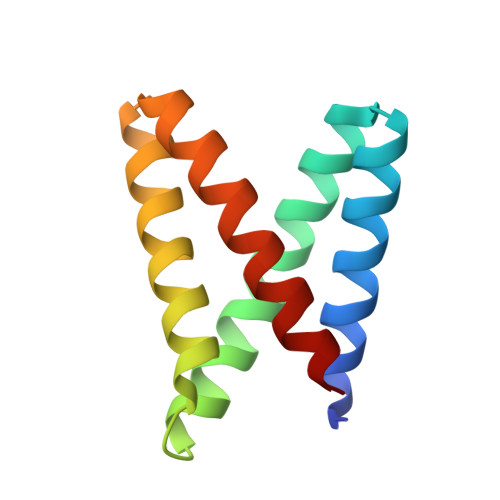Evolution of a highly active and enantiospecific metalloenzyme from short peptides.
Studer, S., Hansen, D.A., Pianowski, Z.L., Mittl, P.R.E., Debon, A., Guffy, S.L., Der, B.S., Kuhlman, B., Hilvert, D.(2018) Science 362: 1285-1288
- PubMed: 30545884
- DOI: https://doi.org/10.1126/science.aau3744
- Primary Citation of Related Structures:
5OD1, 5OD9 - PubMed Abstract:
Primordial sequence signatures in modern proteins imply ancestral origins tracing back to simple peptides. Although short peptides seldom adopt unique folds, metal ions might have templated their assembly into higher-order structures in early evolution and imparted useful chemical reactivity. Recapitulating such a biogenetic scenario, we have combined design and laboratory evolution to transform a zinc-binding peptide into a globular enzyme capable of accelerating ester cleavage with exacting enantiospecificity and high catalytic efficiency ( k cat / K M ~ 10 6 M -1 s -1 ). The simultaneous optimization of structure and function in a naïve peptide scaffold not only illustrates a plausible enzyme evolutionary pathway from the distant past to the present but also proffers exciting future opportunities for enzyme design and engineering.
Organizational Affiliation:
Laboratory of Organic Chemistry, ETH Zürich, 8093 Zürich, Switzerland.

















